Pension Planning For The Self-Employed
There are 4.5 million self-employed people in the UK – that’s one in seven of the UK workforce – but only 18% of them contribute to a pension.
The explanation for this low number might be that saving for a pension when you’re self employed isn’t as straightforward as it is for an employed person. For instance, the latter might automatically benefit from a workplace scheme and employer contributions.
Don’t rely on the State Pension
Whether you’re employed or self-employed you’re entitled to the full basic State Pension, but don’t expect this alone to give you the income you’ll need to retire in comfort.
In fact, many people over estimate how much they will receive from the basic state pension, which is currently just £115.95 a week plus any means-tested benefits. This rises to a maximum flat rate of £155.65 from April 2016 – but only for those who’ve paid 35 years of National Insurance – giving an income just over £8,000 per year.
As State support is unlikely to enable you to continue your current standard of living into retirement, it’s imperative for the self-employed to find other ways of providing the additional income they will need.
Start saving early
It’s stating the obvious, but the sooner you start saving into a pension the bigger your potential retirement fund. You’ll also have more time to benefit from the tax relief that’s available.
To highlight the difference saving early makes, a 25 year-old male who was looking to retire at 68 and saving £400 a month would have an estimated pension pot of £20,100 a year. A 45 year old male retiring at 68 would have to save £1,000 a month to have an estimated pension pot of £19,700.
Minimise the amount of tax you pay
One of the main benefits of paying into a pension is the tax relief the savings attract. For example, if you’re a basic rate taxpayer paying £80 into your pension each month, HMRC will effectively add an extra £20 in tax relief.
The maximum amount you can save each year that attracts tax relief (otherwise known as the annual allowance) is £40,000. If you wish to withdraw funds whilst continuing to pay into a defined contribution pension scheme, the annual allowance is reduced to £10,000.
Importantly, if your income is low and you’re not able to save the full £40,000 in one tax year, you can carry forward any unused allowance and use it against earnings in the next tax year. Please note:
- You must have been a member of a registered pension scheme during the years you want to carry forward
- You can’t receive tax relief on contributions over and above your earnings in tax year
- You can only carry forward unused allowance from the three previous tax years
What type of pension is right?
The self-employed can choose from a range of different pension products, including stakeholder pensions, personal pensions and Self Invested Personal Pensions (SIPPs). Each has its advantages and disadvantages – we can advise on which is right for you.
Perhaps the most flexible pensions are stakeholder schemes. They allow you to save as little as £20 per month and the charges are relatively low, which is helpful if you have irregular income levels.
HM Revenue and Customs practice and the law relating to taxation are complex and subject to individual circumstances and changes, which cannot be foreseen.
The value of investments and any income from them can fall as well as rise and you may not get back the original amount you invested.

